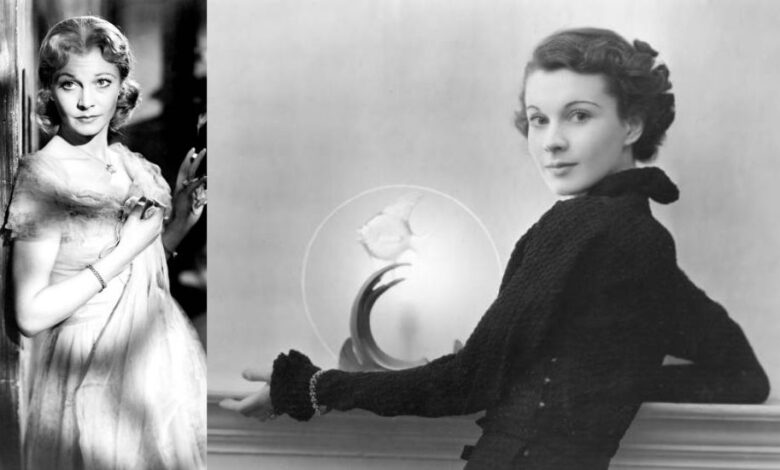Vivien Leigh Cause of Death: The Tragic End of a Timeless Screen Legend

Vivien Leigh, born Vivian Mary Hartley on November 5, 1913, in Darjeeling, British India, remains one of the most iconic actresses in the history of cinema. Known for her beauty, talent, and tragic personal life, she captivated audiences with her emotionally resonant performances. She is best remembered for her portrayal of Scarlett O’Hara in Gone with the Wind (1939) and Blanche DuBois in A Streetcar Named Desire (1951). Despite her luminous screen presence, her life was marred by chronic illness and emotional turmoil. In this article, we explore the full story behind the Vivien Leigh Cause of Death, her illustrious career, and her legacy as an actress and mother.
Early Life and Career Beginnings
Vivien was the daughter of Ernest Hartley, a British colonial officer, and Gertrude Mary Frances. She was educated in India and various European convent schools before training in acting at the Royal Academy of Dramatic Art in London. Her debut came in 1935 with Things Are Looking Up, and soon she became a rising star in British cinema.
Vivien Leigh Filmography: Highlights from an Illustrious Career
Vivien Leigh’s filmography is relatively short, spanning fewer than 20 major roles, but each performance left an indelible mark. Among her most acclaimed works:
-
Gone with the Wind (1939) – Played Scarlett O’Hara; won Best Actress Academy Award
-
Waterloo Bridge (1940)
-
That Hamilton Woman (1941)
-
Anna Karenina (1948)
-
A Streetcar Named Desire (1951) – Won her second Academy Award
-
The Roman Spring of Mrs. Stone (1961)
-
Ship of Fools (1965) – Her final film
These performances reflected not just her acting ability but her emotional depth and command over complex characters, making her a legend of the silver screen.
How Old Was Vivien Leigh in Gone with the Wind?
When Gone with the Wind was released in 1939, Vivien Leigh was 26 years old. Despite being British and relatively unknown in America at the time, she beat out hundreds of actresses—including Bette Davis and Katharine Hepburn—for the role of Scarlett O’Hara. Her performance earned critical acclaim and solidified her place in Hollywood history.
Personal Life: Marriages, Children, and Family
Vivien Leigh married twice. Her first husband was Herbert Leigh Holman, a barrister, with whom she had one child:
-
Suzanne Farrington – Her only daughter, born in 1933.
Her second marriage was to the famous British actor Laurence Olivier, lasting from 1940 to 1960. Though they were considered one of the most glamorous couples in show business, their marriage suffered due to Leigh’s deteriorating mental health and professional conflicts.
Vivien Leigh was also a grandmother to:
Her family remained a relatively private affair, with daughter Suzanne avoiding the limelight unlike her famous mother.
Mental Health Struggles and Tuberculosis
Vivien’s personal struggles were deeply intertwined with her public life. Diagnosed with bipolar disorder (then known as manic depression), she frequently oscillated between manic highs and depressive lows, which impacted her professional and personal relationships. During the filming of Elephant Walk in 1953, Leigh suffered a major breakdown and was replaced by Elizabeth Taylor.
In addition to her mental health struggles, Vivien also suffered from chronic tuberculosis. First diagnosed in the mid-1940s, the disease plagued her for over two decades. Despite intermittent periods of recovery, it eventually contributed to her untimely demise.
Vivien Leigh Cause of Death: How Did Vivien Leigh Die?
The Vivien Leigh Cause of Death was officially attributed to tuberculosis. On July 8, 1967, Vivien Leigh died at the age of 53 in her London home in Belgravia. According to reports, she collapsed in her bedroom while attempting to walk to the bathroom. The tuberculosis, which had returned aggressively, caused her lungs to fill with fluid, ultimately leading to suffocation.
Her long-term partner, John Merivale, discovered her and immediately called for help, but it was too late. She was cremated and her ashes were scattered on the lake at her country home in East Sussex.
Theaters in London dimmed their lights for an hour in her honor—a fitting tribute to a woman whose career had defined elegance and talent for generations.
Controversial References: Setting the Record Straight
There have been bizarre online rumors and inappropriate fan-made content, such as references to “ms vivian leigh – pregnant belly and toes oil tease”. These references are not only inaccurate but highly disrespectful. Such claims do not reflect the truth of her life and should not be given any legitimacy. Vivien Leigh’s legacy deserves to be honored based on her incredible contributions to cinema and theater, not distorted by modern internet culture.
Vivien Leigh Died But Her Legacy Lives On
Though Vivien Leigh died in 1967, her contributions to film and theater remain immortal. She was posthumously celebrated with documentaries, biographies, and retrospectives. She remains one of the few actresses to win two Academy Awards for iconic roles that have stood the test of time.
In 1999, the American Film Institute ranked her as the 16th greatest female screen legend of classic American cinema. Her original costumes from Gone with the Wind and Streetcar Named Desire have become treasured museum pieces. Her complex life—filled with brilliance, beauty, tragedy, and mental anguish—only deepens the appreciation for her artistry.
Summary Table: Vivien Leigh at a Glance
| Category | Details |
|---|---|
| Full Name | Vivian Mary Hartley |
| Stage Name | Vivien Leigh |
| Birthdate | November 5, 1913 |
| Death Date | July 8, 1967 |
| Age at Death | 53 |
| Cause of Death | Tuberculosis (lungs filled with fluid) |
| Oscar Wins | Gone with the Wind (1939), A Streetcar Named Desire (1951) |
| Spouses | Herbert Leigh Holman (1932–1940), Laurence Olivier (1940–1960) |
| Children | Suzanne Farrington |
| Grandchildren | Rupert, Neville, and Jonathan Farrington |
| Famous Films | Gone with the Wind, Streetcar, Ship of Fools, etc. |
Final Thoughts
Vivien Leigh was more than a beautiful face on screen—she was an artist who gave every role her soul. The Vivien Leigh Cause of Death may have marked the end of her physical life, but her cinematic presence continues to influence generations. Her dual battle with mental illness and tuberculosis, while painful, only adds depth to her legacy. Remembered for her award-winning roles, artistic integrity, and tumultuous love life, Vivien Leigh remains a symbol of brilliance and fragility in equal measure.



